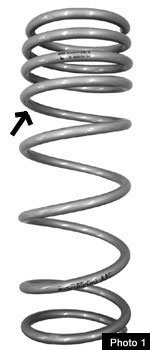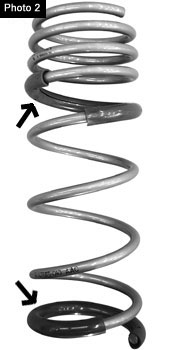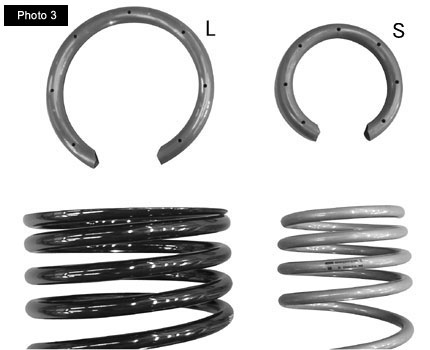Where to Use Silencer Rubber for Best Results

Nowadays comfort is a given, and low down spring users are no exception. Of course they care about a smooth ride, and they also mind noise. Noise from low down springs would usually be a metallic clank from coils hitting each other when the springs compress.
To prevent play at lower ride height, most low down springs these days are variable (or progressive) rate springs. As Photo 1 shows, the top and bottom end of variable rate springs are wound differently. The top part has a small pitch, and the bottom part a large pitch. The coil clashing sound often arises where the small pitch transitions into the large pitch (the arrow in Photo 1). No noise occurs in the small pitch part, because it's fully compressed when the vehicle is jacked down, and remains so during driving.
To eliminate the coil clashing noise, TEIN offers the Silencer Rubber. The unpleasant noise can be eliminated by wrapping that around the part that's likely to generate noise, as shown in Photo 2. In addition, it's effective to wrap it on the spring end that adjoins the vehicle's spring seat, causing these metal parts to clash (Photo 2, lower arrow).

Diameters of low down springs vary, depending on the vehicle (Photo 3). Accordingly, the Silencer Rubber is available in sizes S, M and L; please choose the best fit for your spring size. An adhesive coating inside the Silencer Rubber makes it hard to come off, preserving its long-term effectiveness.

